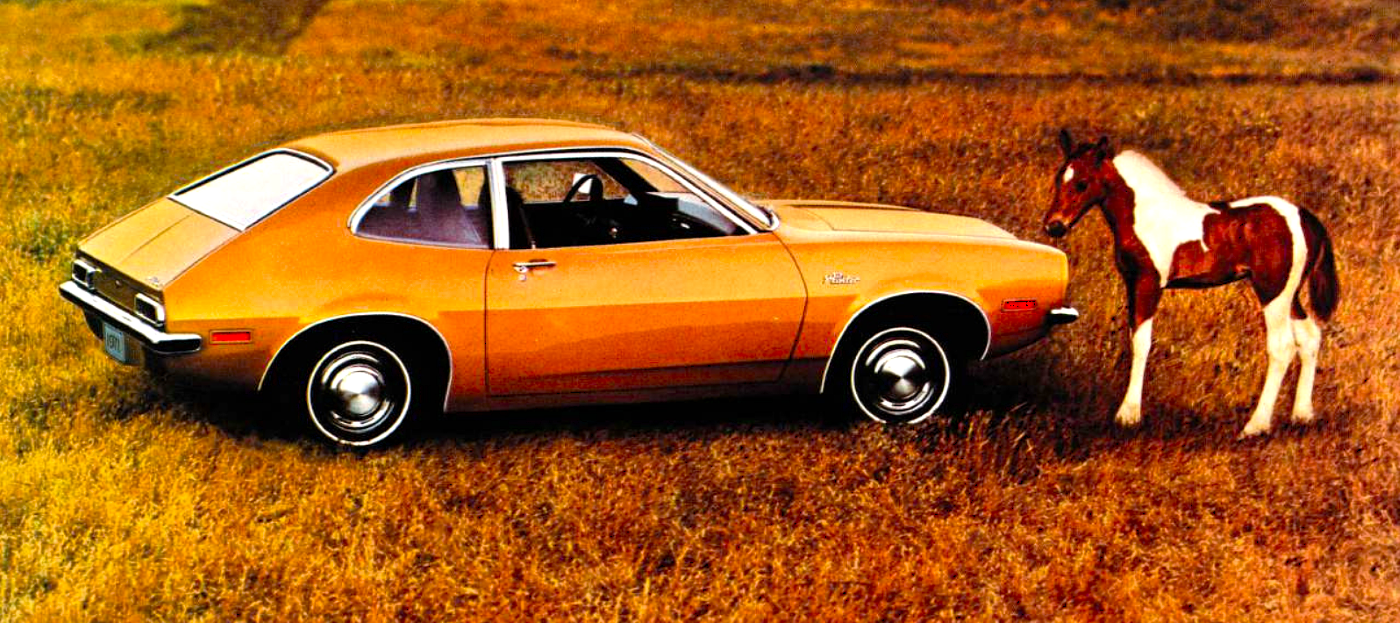
The Ford Pinto was a subcompact car produced by Ford Motor Company from 1971 to 1980. It was developed quickly to compete with the rising popularity of small, fuel-efficient imports from Japan and Europe during the early 1970s.
- Production years: 1971–1980
- Body styles: 2-door sedan, 3-door hatchback, 3-door station wagon
- Engines: Mostly 4-cylinder engines (1.6L, 2.0L, 2.3L), with a small V6 option later on
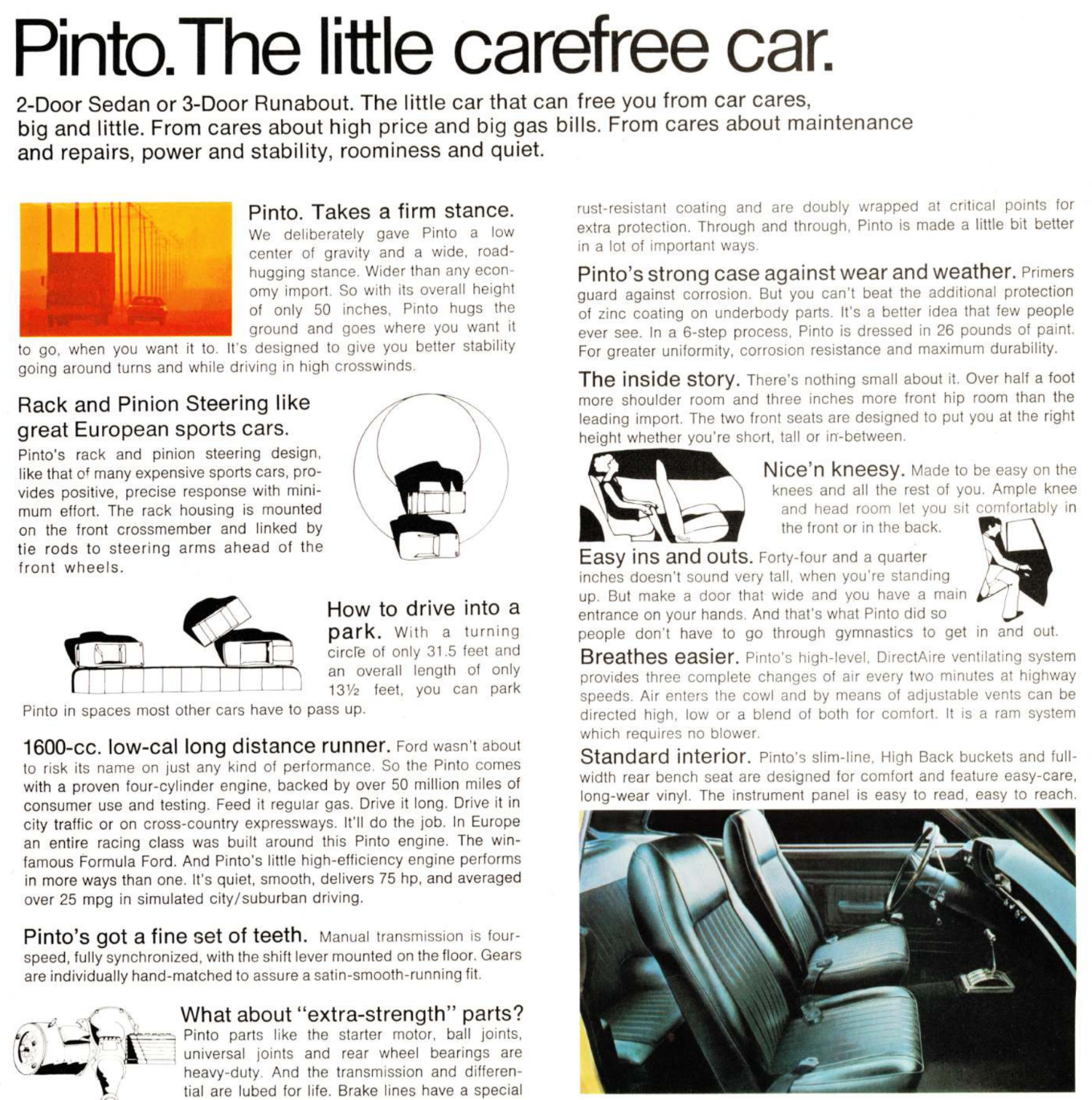

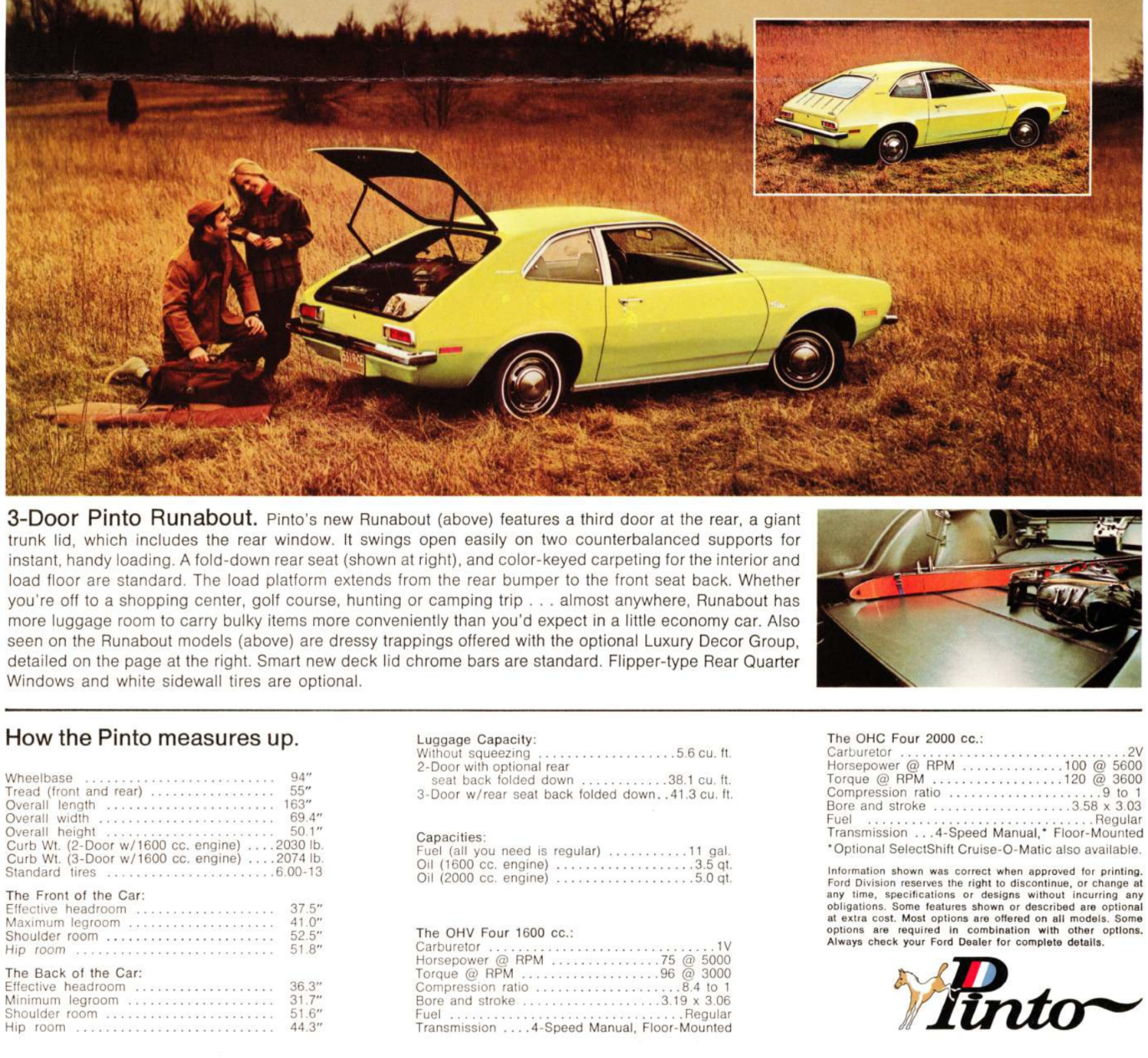
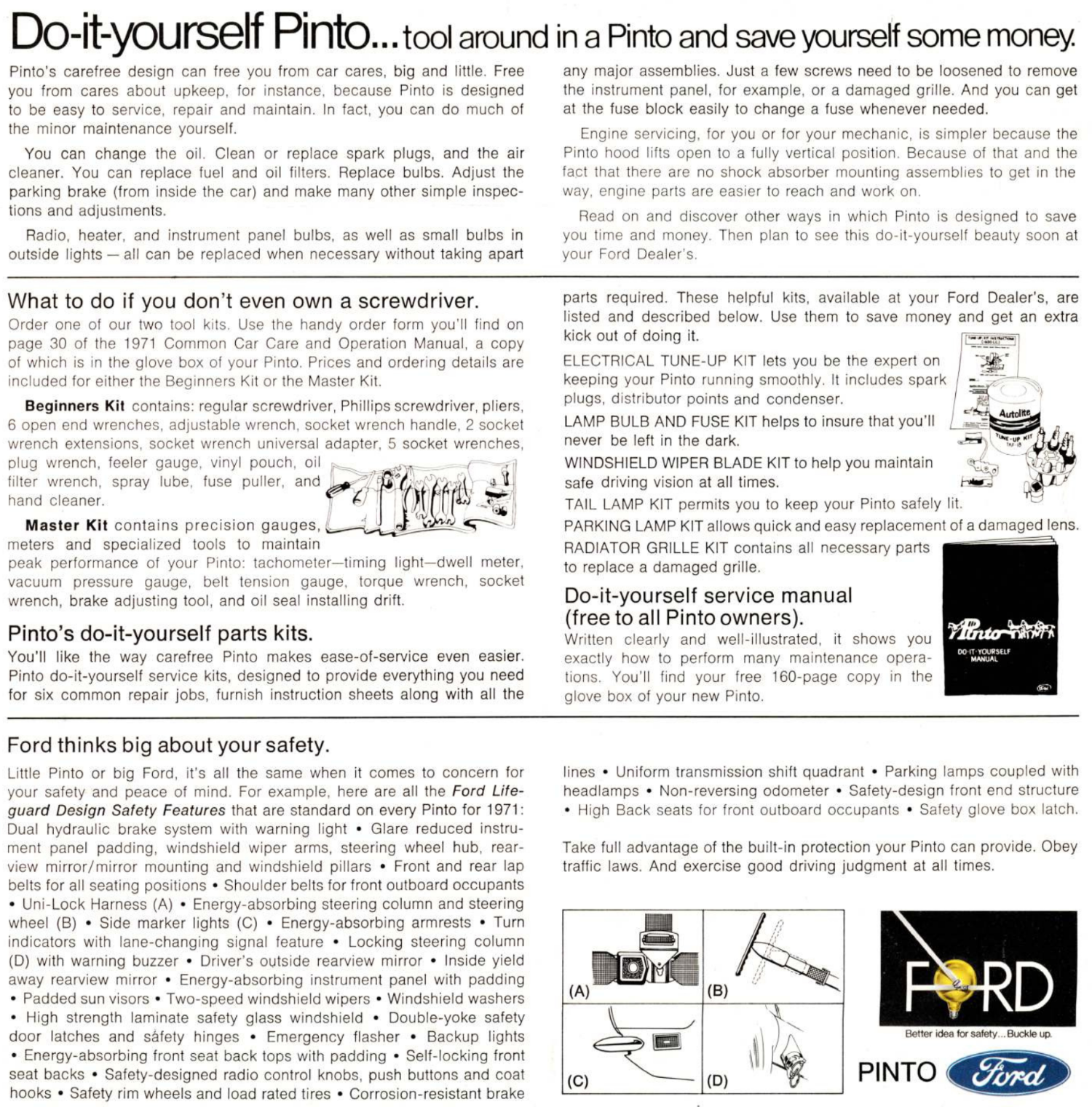
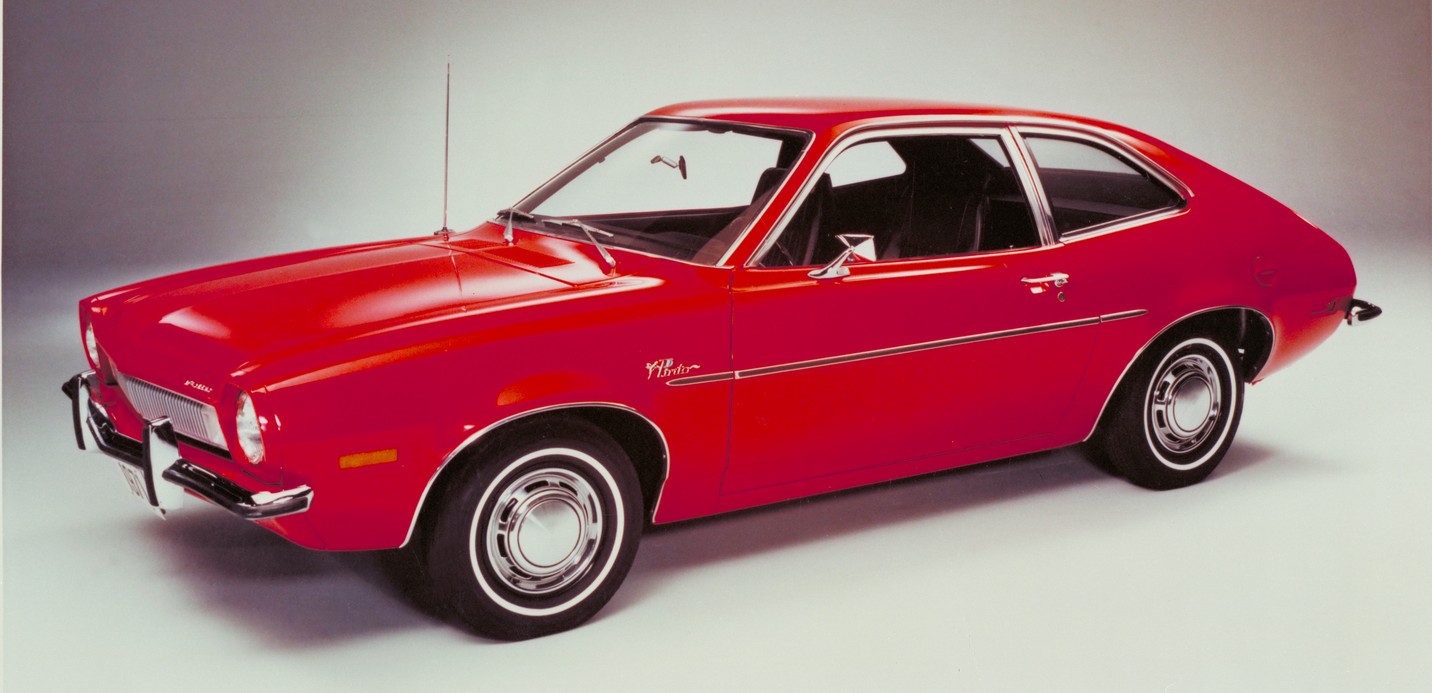
Ford Pinto Model History (1971–1980)
1971 – Introduction
- Debuted in September 1970 as a 1971 model.
- Base price: $1,919, making it one of the cheapest American cars.
- Engine choices:
-
- 1.6L Kent inline-4 (75 hp, sourced from Ford UK).
- 2.0L inline-4 (100 hp, from Ford of Germany).
-
- Body: 2-door sedan only.
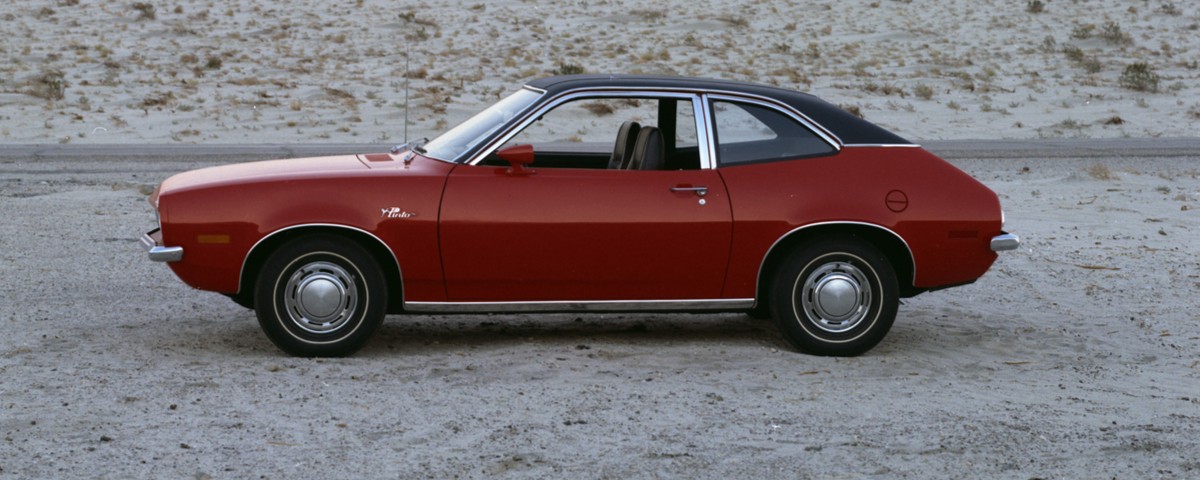
1972
- Pinto Runabout introduced — a hatchback version.
- Sales surged; over 480,000 units were sold in the first full year.
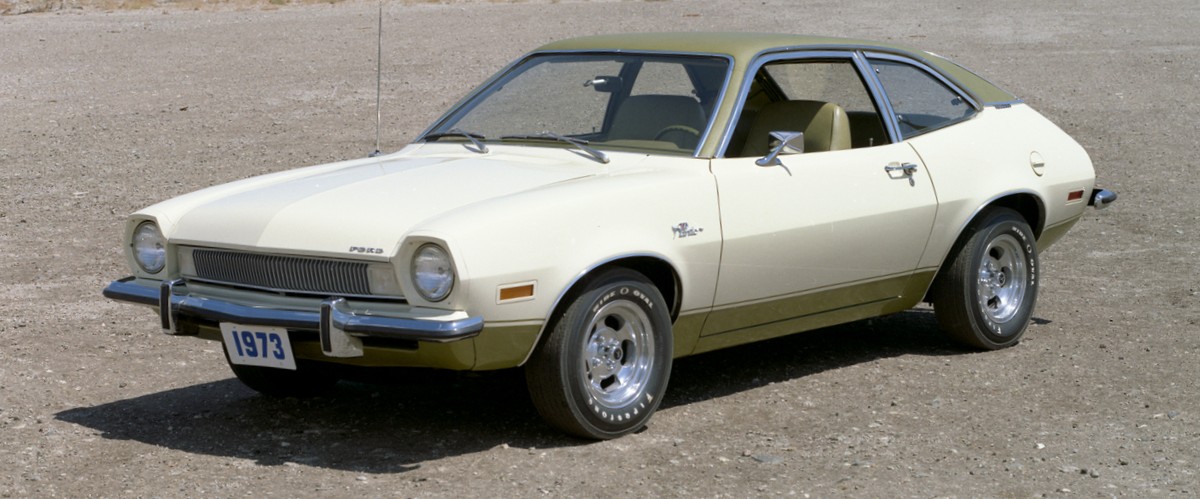
1973
- Station wagon added, with optional woodgrain paneling (“Squire”).
- The wagon quickly became the most popular Pinto model.
1974
- 5 mph bumpers added (front and rear) to meet U.S. safety standards.
- Engines: New 2.3L OHC 4-cylinder (88–90 hp), which would become a Ford staple.
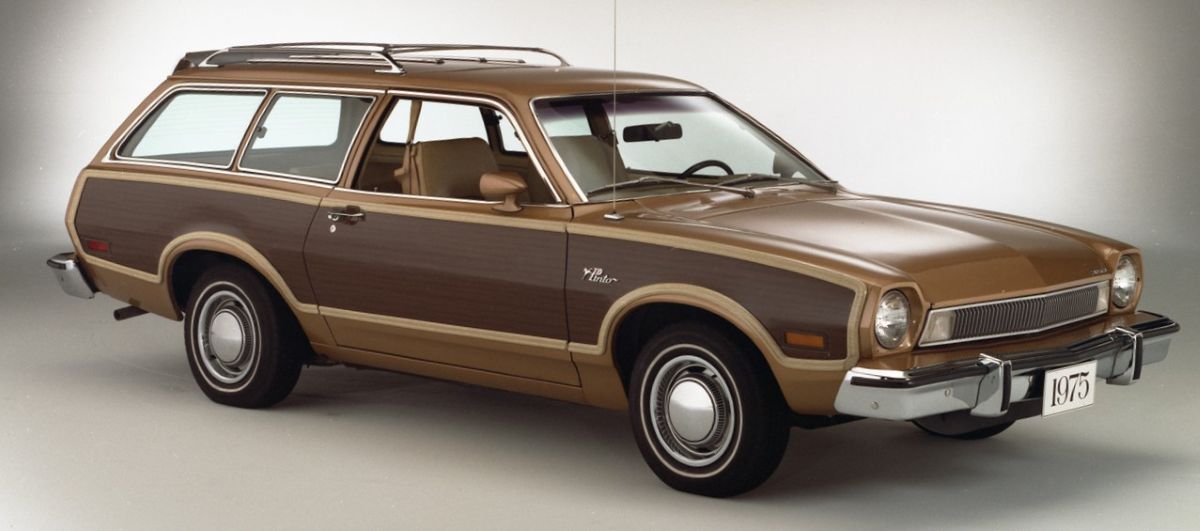
1975
- Minor styling updates, revised grille.
- 2.8L Cologne V6 became optional in wagons.
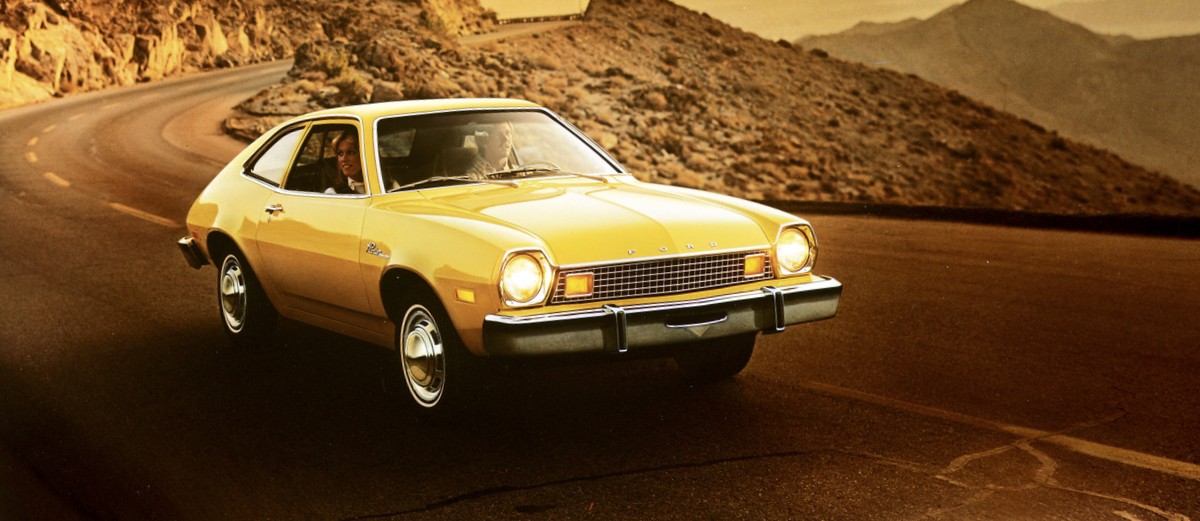
1976
- Pinto hit peak popularity with over 544,000 units sold.
- Became one of America’s best-selling cars that year.
1977
- Styling freshened with a new front end.
- Market competition heating up — Toyota Corolla and Honda Civic were becoming strong rivals.
1978
- Pinto became notorious after lawsuits over its fuel tank safety.
- A recall was eventually issued to reinforce the tank and install protective shields.
1979
- Pinto sales began dropping fast due to safety stigma and better imports.
- Ford was already preparing its successor: the Ford Escort (1981 in the U.S.).
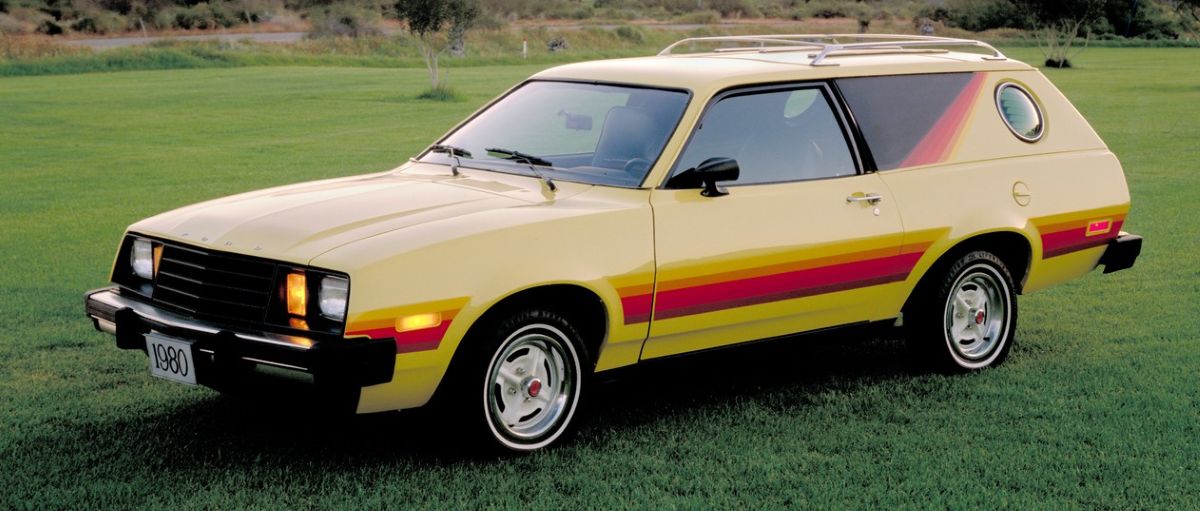
1980 – Final Year
- Last model year of production.
- By then, Pinto’s reputation was badly damaged.
- Production total: over 3.1 million built.
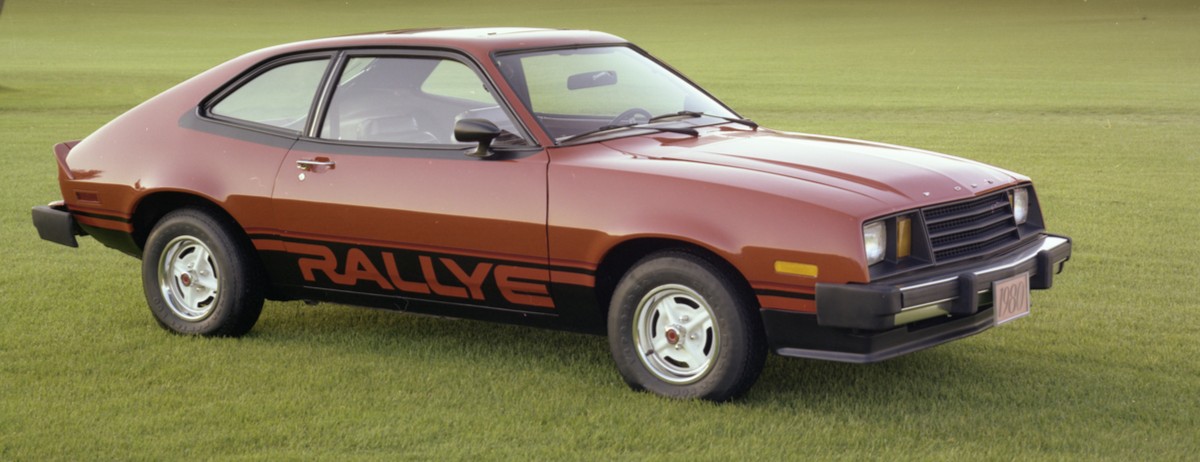
Notoriety:
The Pinto is infamous for its fuel tank design flaw. The tank was positioned behind the rear axle, making it vulnerable in rear-end collisions. This sometimes led to fuel leaks and fires. Ford’s decision not to immediately recall or redesign the tank (due to cost-benefit analysis balancing lawsuits against repair costs) became a major corporate ethics scandal. The “Pinto Memo” controversy tarnished Ford’s reputation for years.
Concept Cars
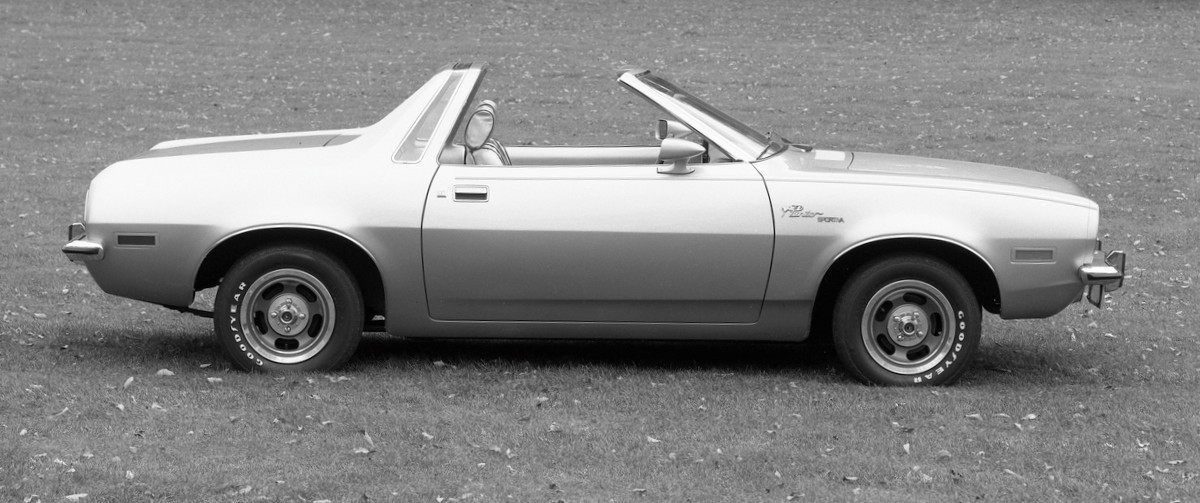
1972 Ford Pinto Sportiva (Concept Car)
Introduced by Ford in 1972 as a styling study and show car. Based on the Pinto Runabout hatchback platform. Intended to explore whether the Pinto could be repositioned as a sporty lifestyle vehicle rather than just an economy commuter. The Sportiva concept was shown with a very distinctive targa-style roof — essentially a removable roof panel over the front seats with a fixed rear section. The Exterior with Sleeker, more aggressive bodywork than the production Pinto, Sporty fastback-inspired roofline, Unique front fascia with hidden or stylized headlamps (depending on which prototype version) and Flared wheel arches and wider stance. The Interior had Upgraded, European-influenced trim, Sport-oriented steering wheel and dash layout, and More upscale materials compared to the stock Pinto. Pinto Sportiva Used Pinto running gear (2.0L OHC 4-cylinder at the time). Focused entirely on styling — not a performance prototype. The Sportiva never entered production. It was one of several “image experiments” Ford tried in the early ’70s (others being things like the Pinto Pangra, a sporty aftermarket variant).
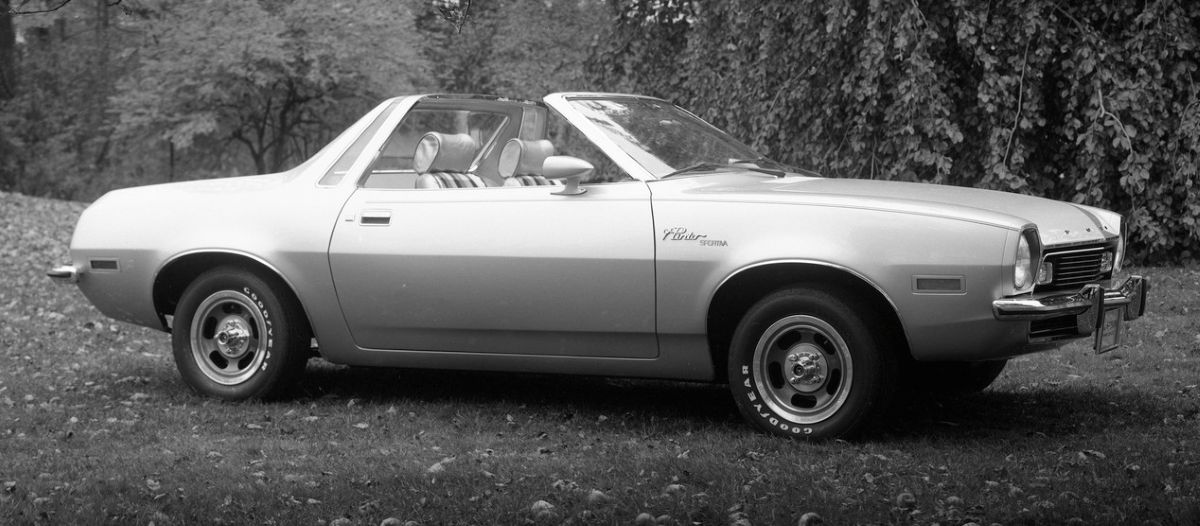
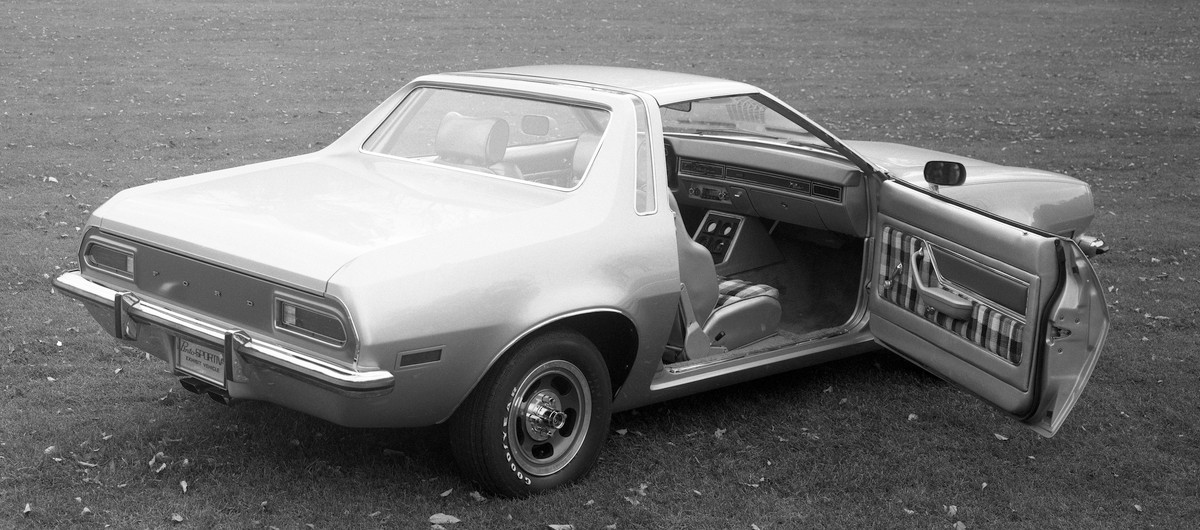
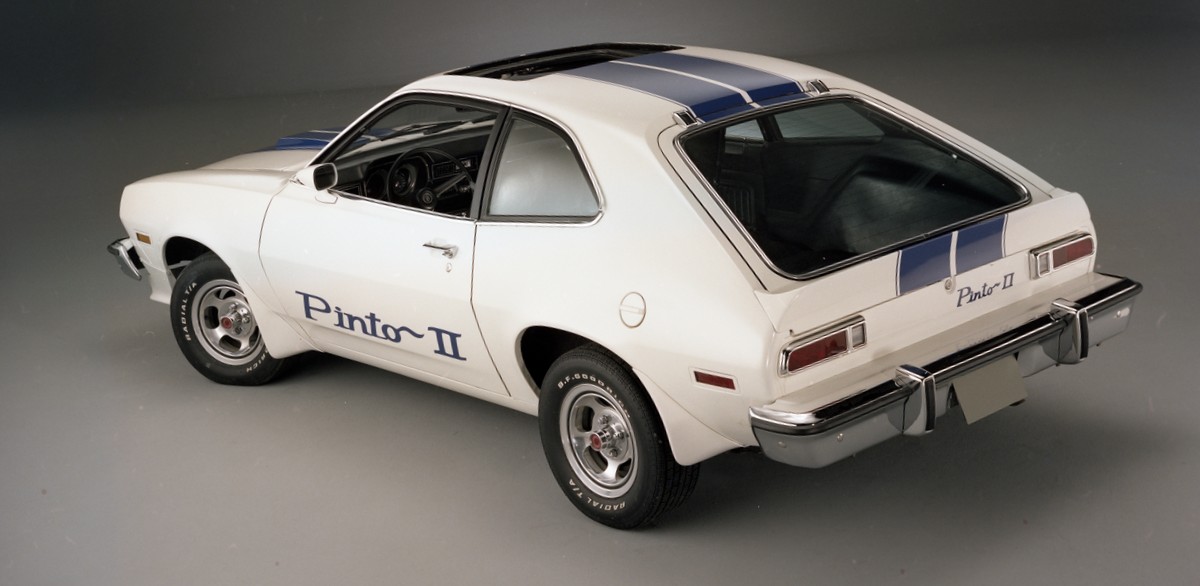
1976 Ford Pinto II (Concept Car)
By the mid-1970s, the Pinto was still selling well, but Japanese imports (Honda Civic, Toyota Corolla, Datsun B210) were reshaping buyer expectations for small cars. Ford wanted to showcase a more modern, aerodynamic, and upscale Pinto concept. Shown in 1976 as a potential successor to the Pinto. The Pinto II was based on Pinto running gear, though Ford presented it mainly as a styling study, not a true engineering prototype.
The Exterior was Much sleeker and more aerodynamic than the original Pinto. More European-inspired fastback styling (echoing Ford of Europe designs like the Escort and Capri). Flush front end with integrated bumper treatment, instead of the heavy chrome of the production Pinto. Clean, wedge-shaped profile with sharper body lines. The Interior was Futuristic dashboard with wraparound styling and had Emphasis on a more upmarket, driver-focused cabin than the economy-driven Pinto interior.

You must be logged in to post a comment.